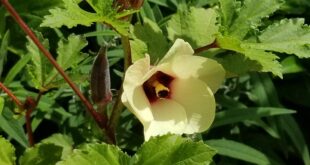From the north of Italy, the artichoke of aristocrats. This choke has small oval slightly elongated head 3 inches wide by 5 inches long. mouthwatering flavor. Fruit is more elongated than the green globe type.
The edible thistle first appeared in Italy and Sicily as early as 200-300 B.C. It may be a descendant of C. cardunculus, the wild cardoon of Greece. Over the centuries, multiple varieties were refined and transplanted through Spain, Europe and in the 1800s, brought to North America, first by the French and then the Spanish, where cultivation began in the Monterey area of California.
Propagation: Specialty seed catalogs such as Pinetree Garden Seeds, the Cook’s Garden and Territorial Seed Co. offer purple Italian artichoke seeds. Most home gardeners forgo starting from seed (since many don’t sprout true to type) and seek out “crown divisions” or transplants from a good local nursery. In the Bay Area, you may plant these whenever available, but getting them in the ground in October or November gives the best chance for a crop the first spring. Depending on the local microclimate, a healthy plant may flower in the spring and fall. Artichokes spread their leaves 4 to 6 feet and can grow as tall, so they need wide spacing. Regular watering and full sun are important, though they tolerate foggy weather nicely and love to be close to the sea. After the first year, your plant will push forth a dense cluster of shoots from the base. By dividing and thinning these shoots, you can start new plants. Expect to replant and start over every three to five years.
Tips –
- Artichokes are heavy feeders so fertilize well from the early stages of growth.
- I recommend a minimum 10 gallon pot (15 inch diameter by 15 inch height).
- You may have noticed the nasturtiums in the pot. Besides providing pretty and tasty flowers in the springtime, nastrurtiums provide natural fertilizer. Nasturtiums, like legumes, store/fix nitrogen in the root nodules. This nitrogen can be used by leafy plants like artichokes. The key thing to remember is the nitrogen is in the roots. If you remove the nasturtium, leave the roots.
Harvest – From the center of the plant grows the largest flower bud, which should be harvested “just before” the leaves begin to spread and open. Cut the stem about 2 inches beneath the flower bud with a sharp, clean knife. After the central bud is harvested, various numbers of smaller buds form from side shoots.
How to cook: You can steam the larger purple buds for 35-45 minutes, until outer leaves easily pull free, just as you would the commercial ‘Green Globe.’ Some Italian varieties (‘Spinoso Sardo’) have long, dangerous spines and pre-trimming bracts before cooking is essential to avoid having guests puncture fingers. Melted butter, herbed mayonnaise or a squeeze of lemon and olive oil all make wonderful dips for the “leaves” and heart.
To make use of young, small, tender side buds, do what the Italians do and eat them raw. Trim outer leaves, cut off the top and most of the stem, pare away lower stem leaves and very thinly slice or shave on a mandoline. Drizzle with olive oil, lemon, salt, pepper and a few shavings of Parmigiano Reggiano and prepare to be transported to Tuscany in the spring.
Castroville Artichoke Festival June 3 – 4 2017: Don’t miss it
Grown by Sweetwater nursery
Bought November 1 2016 at Yamagami nursery








